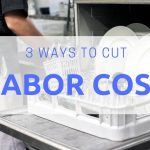7 Steps to Effective Restaurant Manager Meetings
Do you have restaurant manager meetings? I’m not talking about the passing-in-the-hall quick conversations, but actual sit-down meetings where you focus on moving the business forward? If you are having sit-down meetings, are they effective?
Let me define what I mean by restaurant manager meetings. It’s a weekly, scheduled time, set aside to review goals, expectations and challenges and then brainstorm solutions. It’s not a five-minute tirade over what didn’t get done at closing the night before.
It is also mandatory.
To begin having effective restaurant manager meetings, follow these seven steps:
Step 1 – Plan
Look at last week’s priorities and goals and audit where they are. Did they get accomplished, did you hit your goals or were there things that happened that delayed results? Take the time to really look at things with a detailed eye.
Meet with your general manager and communicate the goals for the next week. Gather your general manager’s priorities that need to be addressed and added to the list. This is your opportunity to make sure your general manager is on the same page as you. You are also setting the general manager up for success to conduct an effective and efficient managers’ meeting.
Next, create your list of goals for you and your team for the upcoming week. Be specific and clear in the list of what you want done, how you want it done, how well you want it done and more importantly by when. Without deadlines nothing would get done.
SIDE NOTE: Step one applies to every restaurant owner whether you have a partner or not. The only difference is when you have a partner, this step becomes even more important. Too often in independent restaurants, partners don’t communicate. As a result, they send mixed signals to their employees and managers because they ask them to do two completely opposite things or get the same thing done two completely different ways. Or worse, they do this directly in front the employee resulting in an argument/fight between the partners.
Step 2 – Make it mandatory
If you want to ensure attendance, make sure everyone understands the restaurant manager meeting is mandatory. Do your managers a favor and make sure to switch up the days of the mandatory meeting so that the same employee isn’t coming in on his or her day off. Every. Single. Time.
You can still set this up on a regular schedule so everyone can plan to attend the meeting, but rotate the day of the week when you have the meeting.
Step 3 – Create agenda and collect data
Whether it’s you or your general manager who will create the agenda, use your list of goals for the week to create the agenda for the meeting. The agenda should include such things as a start and finish time, and topics to be addressed as well as who is responsible for addressing each topic.
Make sure you have your numbers and appropriate reports, such as your prime cost targets, key item report, waste sheets, marketing materials, etc. Have everything ready so when you hand out the agenda, everyone has everything they need to be successful.
Step 4 – Stay on track
Stick to the agenda. If and when a NEW topic comes up, make sure you determine if it should be tabled until the next meeting or if you need to set up a sidebar meeting after the restaurant manager meeting. Do not add it on the fly. When you don’t control the topics, start and stop time, managers meetings go forever. Your manager meetings should run 60-90 minutes. Anything longer than 90 minutes makes your managers feel like their time isn’t valued and lack of focus creeps in.
Step 5 – Facilitate and communicate
One of the biggest questions I get all the time is, “I’m the owner, shouldn’t I conduct the meeting?” The short answer is NO, unless you fulfill the general manager role as well. Your general manager is supposed to execute the plan. He or she is going to be held accountable for these goals, so you need to put them in a leadership role and demonstrate that the general manager is the other managers’ direct supervisor.
When conducting the restaurant manager meeting, the general manager should only be talking about 20 percent of the time and clear expectations must be laid out. This is because your managers have come to the meetings knowing what they are responsible for because you have assigned them their duties in step three. They will have brought the correct information from cost of goods sold, labor costs, employee issues, project updates, etc. They should present to the group on their areas of responsibility. You want every manager engaged and participating in the meeting.
Step 6 – Assign specific actions
During the restaurant manager meeting, break down the steps for what needs to be done and who is going to be responsible for each step. Assign deadlines and benchmarks because you want to delegate effectively, helping everyone on the team to be successful. This is part of communicating your expectations clearly, helping everyone on the team understand what needs to get done, how you want it done and by when.
Step 7 – Take notes
Assign someone to take notes and then distribute the notes to everyone. This keeps everyone focused on moving forward. No one has an excuse as to why they didn’t get their part done because it was recorded and circulated.
_______
If you’re tired of things not getting done, tired of not making the money your restaurant should be making and/or tired of being frustrated daily with everyone’s performance — owner or manager — then you’ll want to follow these seven simple steps. Just remember it’s not only about being organized, it’s also about being consistent. This comes from conducting the managers meeting weekly.
This way, next week you can measure your results. That which we measure improves!
You can also watch me discuss and explain these steps in my video on my YouTube channel.
To learn more about restaurant manager meetings and ways to instill good communication and leadership, read our free special report, Breaking Away from the Insanity: How to easily take control of your restaurant and make more money. Download it here.





